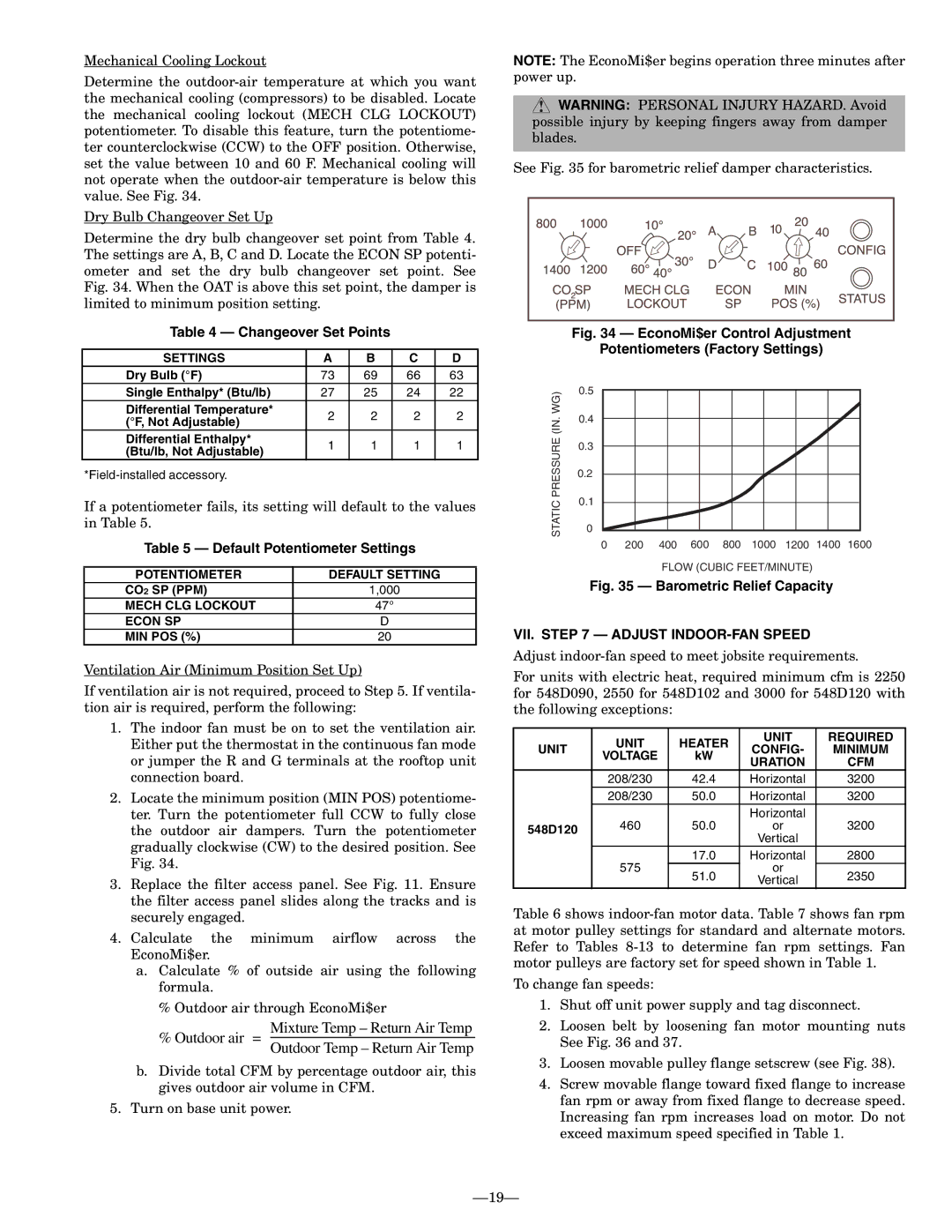548D specifications
The Bryant 548D heat pump stands out in the HVAC market for its robust performance, energy efficiency, and advanced technology. Known for its reliability, this particular model is designed to provide optimal heating and cooling for both residential and light commercial applications.One of the standout features of the Bryant 548D is its variable-speed compressor, which allows for precise temperature control and enhances comfort levels in any environment. This technology enables the 548D to operate efficiently at different speeds, adjusting its output based on the heating or cooling demand. As a result, homeowners can enjoy consistent temperature regulation without the wide fluctuations typical of single-stage systems.
In addition to the variable-speed compressor, the Bryant 548D utilizes advanced refrigerant technology. It employs the environmentally friendly Puron refrigerant, which not only improves the unit's efficiency but also reduces its carbon footprint. This makes the 548D a sustainable choice for those looking to minimize their environmental impact while still enjoying superior heating and cooling performance.
Another key characteristic of the Bryant 548D is its impressive energy efficiency rating, often exceeding the minimum requirements set by the Department of Energy. With a high Seasonal Energy Efficiency Ratio (SEER) for cooling in warmer months and an excellent Heating Seasonal Performance Factor (HSPF), the 548D minimizes energy consumption while maximizing comfort.
The 548D also features Quiet Operation technology, ensuring that the system runs quietly in the background without disrupting daily activities. This is particularly beneficial for light commercial spaces or homes where noise can be a concern. The sleek design and compact size make the unit easy to install in various settings without occupying excessive space.
Furthermore, Bryant incorporates advanced smart technology within the 548D model. The system can be integrated with smart thermostats, allowing users to monitor and control their heating and cooling settings remotely. This feature not only enhances convenience but also enables homeowners to program their systems for maximum efficiency.
In conclusion, the Bryant 548D heat pump is an exceptional choice for those seeking a reliable, efficient, and technologically advanced heating and cooling solution. Its combination of variable-speed compression, eco-friendly refrigerant, high energy efficiency, and quiet operation positions it well in the competitive HVAC market, making it a top choice for both residential and light commercial applications. By investing in the Bryant 548D, consumers can enjoy superior comfort and lower energy bills year-round.

